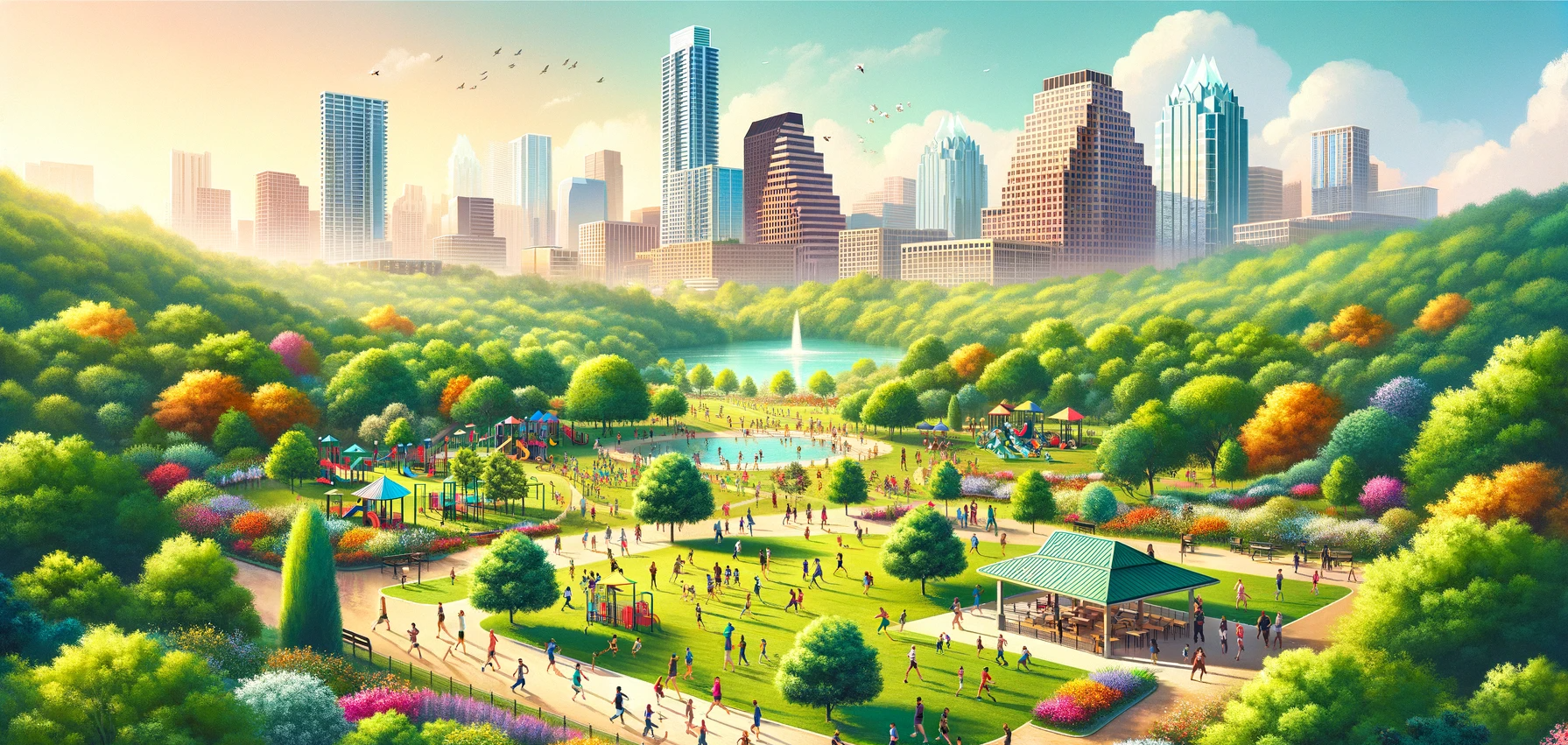Introduction
Austin, Texas, a city renowned for its vibrant culture and booming tech scene, also boasts an impressive commitment to preserving and enhancing green spaces. From sprawling parks to serene nature preserves, Austin’s green spaces are a testament to the city’s dedication to balancing urban development with environmental mindfulness. These areas not only add aesthetic value but also play a crucial role in the well-being of its residents and the health of the environment.
Health Benefits of Green Spaces
The presence of green spaces in Austin offers significant physical and mental health benefits to its residents. Access to parks and natural areas encourages outdoor activities, promoting physical fitness and reducing the risk of chronic diseases. Moreover, studies have shown that spending time in nature can alleviate stress, improve mood, and enhance overall mental health. In a fast-paced city like Austin, these green oases offer a much-needed escape, contributing to the well-being of its community.
Environmental Impact
Green spaces are vital in mitigating the environmental impacts of urbanization. In Austin, these areas play a key role in improving air quality by filtering pollutants and producing oxygen. They also help combat the urban heat island effect, where built-up areas are significantly warmer than their rural surroundings. Additionally, Austin’s green spaces provide crucial habitats for local wildlife, maintaining biodiversity and fostering a balanced ecosystem within the urban landscape.
Social and Community Benefits
Austin’s parks and green areas are more than just beautiful spaces; they are social hubs that foster community engagement. These spaces host a variety of events, from music festivals to farmers’ markets, encouraging social interaction and community bonding. Neighborhood parks serve as gathering places for families and friends, playing a pivotal role in building a sense of community and belonging among Austin’s diverse population.
Economic Advantages
The presence of well-maintained green spaces can have a positive impact on Austin’s economy. Properties near parks and natural areas often see an increase in value, making them attractive investments. Additionally, these spaces draw tourists and locals alike, contributing to the local economy through recreational spending. The aesthetic and recreational appeal of green spaces not only enhances the quality of life but also bolsters the economic health of the city.
Recreational Opportunities
Austin’s green spaces are not just visually appealing; they are playgrounds for a multitude of recreational activities. The city’s parks, trails, and preserves offer endless opportunities for hiking, biking, and exploring nature. Zilker Park, for instance, is a favorite for its vast open spaces, perfect for picnics, sports, and outdoor concerts. The Barton Creek Greenbelt, with its scenic trails and swimming holes, is a haven for adventurers and nature lovers alike. These spaces provide residents with a variety of options to stay active and engaged with the outdoors, contributing to a healthier and more vibrant lifestyle.
Green Spaces as Urban Oases
In the midst of Austin’s urban landscape, green spaces serve as tranquil retreats. They offer a respite from the city’s fast pace, allowing residents and visitors to unwind and reconnect with nature. The serenity of Lady Bird Lake and the botanical gardens, for instance, provides a peaceful environment for relaxation and reflection. These urban oases are essential for mental well-being, offering a place to decompress and rejuvenate amidst the city’s hustle and bustle.
Future Developments and Initiatives
Austin continues to invest in its green spaces, recognizing their importance for future generations. The city has several initiatives and projects underway to expand and enhance these areas. Efforts include creating more accessible and inclusive parks, improving existing facilities, and ensuring the preservation of natural habitats. These forward-thinking projects underscore Austin’s commitment to maintaining a green and sustainable urban environment.
Conclusion
The green spaces in Austin, Texas, are more than just patches of green in an urban setting; they are integral to the city’s identity and vitality. They offer a multitude of benefits, from health and environmental to social and economic. As Austin continues to grow, these spaces will remain crucial in preserving the city’s quality of life, offering a harmonious blend of urban living and natural beauty.
Curious about Austin, Texas Real Estate? Call or Text Brendan Sanford today at (512) 696-0673, or email at [email protected].
